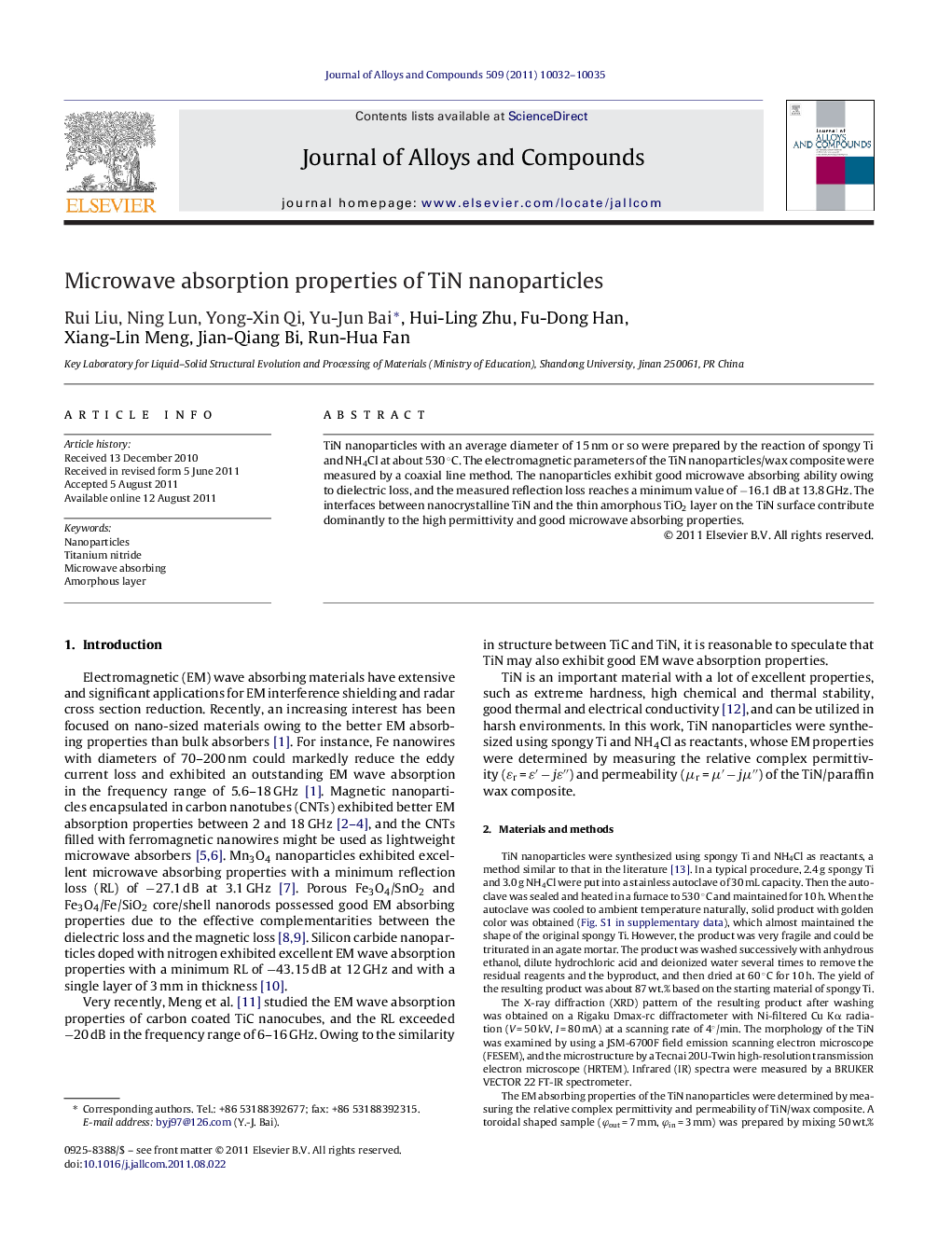| Article ID | Journal | Published Year | Pages | File Type |
|---|---|---|---|---|
| 1616895 | Journal of Alloys and Compounds | 2011 | 4 Pages |
TiN nanoparticles with an average diameter of 15 nm or so were prepared by the reaction of spongy Ti and NH4Cl at about 530 °C. The electromagnetic parameters of the TiN nanoparticles/wax composite were measured by a coaxial line method. The nanoparticles exhibit good microwave absorbing ability owing to dielectric loss, and the measured reflection loss reaches a minimum value of −16.1 dB at 13.8 GHz. The interfaces between nanocrystalline TiN and the thin amorphous TiO2 layer on the TiN surface contribute dominantly to the high permittivity and good microwave absorbing properties.
Graphical abstractNanocrystalline TiN exhibits good microwave absorbing ability owing to dielectric loss, which reaches a minimum reflection loss of −16.1 dB at 13.8 GHz.Figure optionsDownload full-size imageDownload as PowerPoint slideHighlights► Nanocrystalline TiN was synthesized using spongy Ti and NH4Cl as reactants. ► Using spongy Ti as reactant is not only cost-saving but also highly efficient. ► High porosity of spongy Ti favors the transport and diffusion of reactants. ► Nanocrystalline TiN exhibits good microwave absorbing ability. ► The microwave absorbing ability results from dielectric loss.
